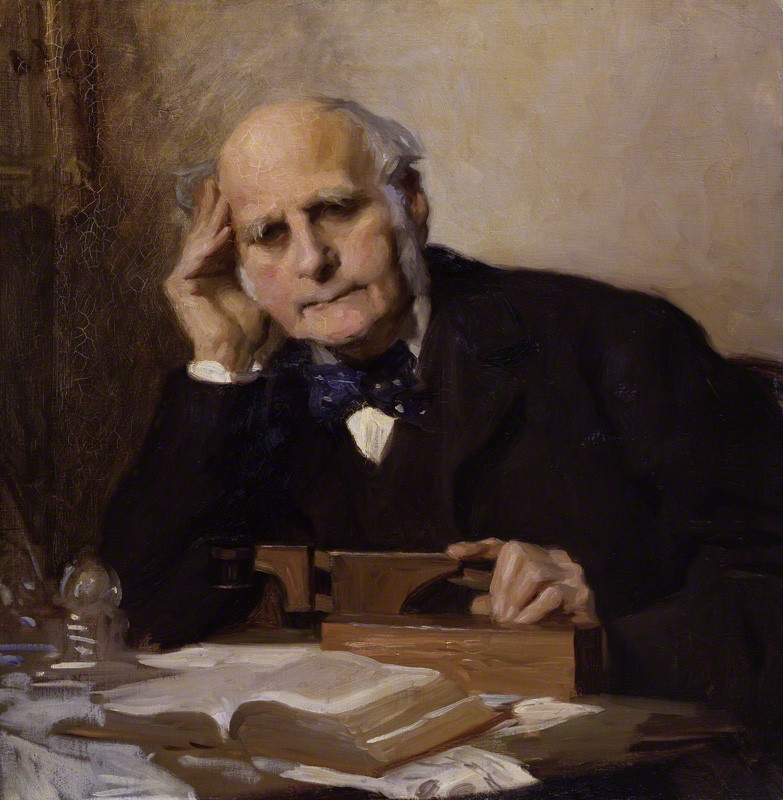
This is the second in a so-far very short series on famous statisticians from history. You may remember that the first in the series was on John Tukey. As I said at that time, rather than just include statisticians randomly in this series, I’m going to focus on those who have had an impact beyond the realm of just statistics.
With that in mind, this post is about Sir Francis Galton (1822-1911), an English statistician who did most of his work in the second half of the 19th century, around the time that Statistics was being born as a viable scientific discipline.
You may remember seeing Galton’s name recently. In a recent post on the bean machine, I mentioned that the device also goes under the name of ‘Galton board’. This is because Galton was the inventor of the machine, which he used to illustrate the Central Limit Theorem, as discussed in the earlier post. You may also remember an earlier post in which I discussed `regression to the mean’; Galton was also the first person to explore and describe this phenomenon, as well as the more general concept of correlation to describe the extent to which two random phenomena are connected.
It’s probably no coincidence that Galton was a half-cousin of Charles Darwin, since much of Galton’s pioneering work was on the way statistics could be used to understand genetic inheritance and human evolution. Indeed, he is the inventor of the term eugenics, which he coined during his attempts to understand the extent to which intelligence is inherited, rather than developed.
Galton is described in Wikipedia as:
- A statistician
- A progressive
- A polymath
- A sociologist
- A psychologist
- An anthropologist
- A eugenicist
- A tropical explorer
- A geographer
- An inventor
- A meteorologist
- A proto-geneticist
- A psychometrician
And you thought you were busy. Anyway, it’s fair to say that Galton falls in my category of statisticians who have done something interesting with their lives outside of Statistics.
His various contributions apart from those mentioned above include:
- He invented the use of weather maps for popular use;
- He wrote a book ‘The Art of Travel’ which offered practical travel advice to Victorians;
- He was the first to propose the use of questionnaires as a means of data collection;
- He conceived the notion of standard deviation as a way of summarising the variation in data;
- He devised a technique called composite portraiture which was an early version of photoshop for making montages of photographic portraits;
- He pretty much invented the technique of fingerprinting for identifying individuals by their fingerprints.
In summary, many of the things Galton worked on or invented are still relevant today. And this is just as true for his non-statistical contributions, as for his statistical ones. Of course, it’s an unfortunate historical footnote that his theory of eugenics – social engineering to improve biological characteristics in populations – was adopted and pushed to extremes in Nazi Germany, with unthinkable consequences.
In retrospect, it’s a pity he didn’t just stop once he’d invented the bean machine.
